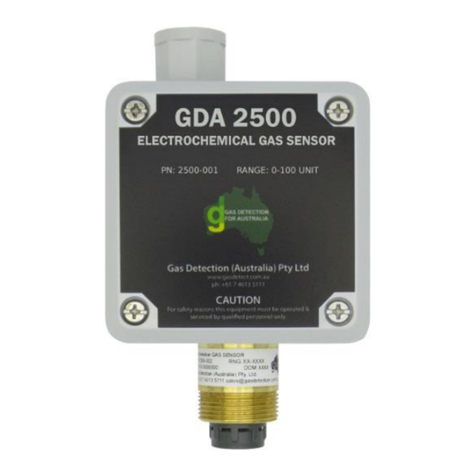
Page 7 of 16 M-GDA-4350 V12 Rev 1.1
2. Sensor Placement
The sensor is rated IP50 and therefore suitable for indoor use only. If it is going to be used in
external environments seek specialist advice from GDA. The sensor should not be exposed to
steam or saturated water vapour.
Carbon Dioxide is heavier than air and therefore will (if there is no air movement) fall to lower
levels. The recommended minimum installation height above the floor is 300mm.
Mount the sensor as close as possible to where the leak of the gas being detecting may occur
as the distance from a potential leek effects the time taken to detect it. The further from the
potential leeks the more the gas will be diluted. Take into account drafts and air movements
when mounting the sensor.
Fit using the four fixing holes in the corners of the box. When drilling avoid any vibration of the
sensor unit. The laser diode sensing unit is very sensitive. Do not expose the sensor to any
mechanical shock.
IT IS VERY IMPORTANT THAT THE GDA 4350 IS INSTALLED IN THE MOST UPRIGHT
POSITION AGAINST A VERTICAL STRUCTURE.
YES (Recommended)
NO NO
For other mounting positions other than recommended please contact Gas Detection
(Australia). The sensor will need to be recalibrated if an alternate mounting position is
required. Do not mount the sensor with the opening facing up, as CO2gas can accumulate in
the sensor and cause false readings.
Figure 2: Sensor Mounting orientations



























